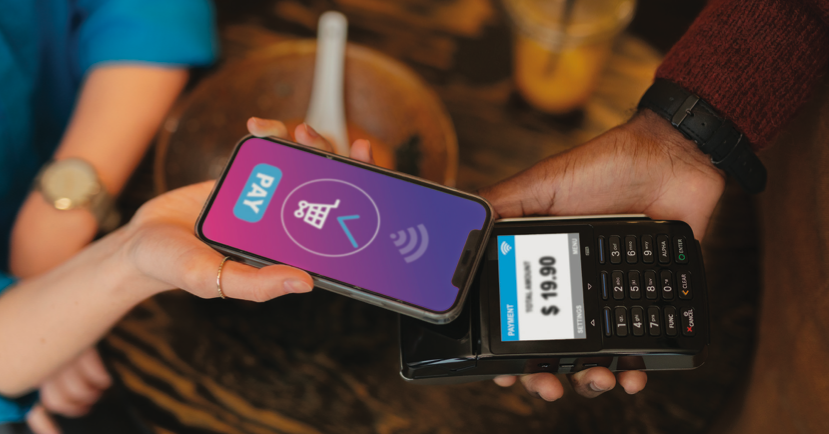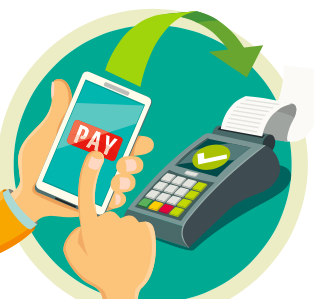
30 August 2024
Could you briefly share your journey that led to your role as COO of Al Etihad Payments?
My journey into the payments industry has been quite diverse and unexpected. Initially, I began my career as a software engineer in the aerospace industry, where I spent nearly a decade honing my technical skills. After completing my MBA, I sought to broaden my horizons into business management and found myself leading a solar energy company in Canada. This role was invaluable in teaching me how to build and scale a small business.
It was during this time that my interest in financial services began to grow, particularly as I took on responsibilities for the company's payments and financial operations. This newfound interest led me into the banking sector, then into insurance, and eventually into the payments industry.
I joined Payments Canada and ultimately became the CIO, where I oversaw the technology and payment services. Later, I had the opportunity to relocate to Singapore to establish an office for the Bank for International Settlements, an experience that was both challenging and rewarding, especially in the wake of the COVID-19 pandemic.
Currently, I have the privilege of serving as the COO at Al Etihad Payments, where I am leveraging my diverse experiences to build and transform the company into a leading national payment infrastructure provider.
Al Etihad Payments was established by the Central Bank of the UAE in 2023. What were the key motivations behind its creation, and how does AEP align with the UAE’s broader objectives for advancing thi digital economy?
In many countries, the central bank doesn’t directly operate retail payment systems. Instead, they often rely on an operating entity to provide those retail-facing services for a variety of reasons. However, the central bank typically prefers to maintain an oversight role over the retail payment schemes and systems, and in this country, that is precisely how Al Etihad Payments came into existence.
The Central Bank decided to divest several functions, such as the UAEWPS and the UAESWITCH, the card switch that we manage. In addition, we have been tasked with enhancing these services with new offerings, such as AANI Instant Payments and others we will discuss later. This approach makes sense from an operational perspective, as a central bank in most countries acts more as a supervisor than an operator, and we have implemented this model here in the UAE.
The company was established last year, and we are in the process of scaling up, taking over the operational responsibilities for UAEWPS and the UAESWITCH. We launched the AANI Instant Payment service in late 2023 and will be launching a national card scheme in the not- too-distant future.
Could you share how AANI is driving innovation in the instant payments landscape and the progress you have made in expanding its reach?
AANI is the platform for innovation in instant payments, offering 24/7 real-time payment experiences and enabling a range of overlay services.
For example, users can simply send money using a mobile phone number, scan a QR code at a merchant checkout, or use it in an online e-commerce setting. AANI facilitates this level of digital innovation, supporting interbank payments, transactions between banks and wallet providers, and all other possible combinations.
All participants in the AANI system are licensed institutions, which includes banks, payment service providers, digital wallets, and exchange houses. We serve as the glue that connects these systems, offering a platform for innovation that participants can leverage to serve their customers and merchants.
Additionally, we have the AANI Mobile app, available in all major app stores. However, the reach of AANI payments extends beyond our app. The goal is for AANI services to be ubiquitous. We currently have around 30 participants, including banks and exchange houses, connected to the platform, and we expect to reach at least 50 by the end of the year. This means that the vast majority of the market will be connected, and AANI services will be available not just through our app, but through the apps of all these financial channels.
As a customer of a participating bank, you won’t even need to download our app to use AANI payment services— they will be natively available within your bank’s app or digital wallet. By the end of the year, we expect to have at least 95% of the market connected.
Could you provide some insight into how AANI plans to handle cross-border payments and integrate these services?AANI’s initial focus is on the domestic payments side, such as person-to-person and person-to-merchant transactions using QR codes or mobile phone numbers— the use cases I previously described. Our priority is to scale the platform, connect all the banks and licensed participants, and have them enroll their customers. This step is crucial as it requires obtaining the customer's consent to activate these services, and we also need to onboard all the merchants.
We want people to recognize AANI and see QR codes at checkout, providing them with the option to pay using this payment method. Our initial push is domestic, but as you mentioned, there are other countries implementing similar services. We do aspire to find ways to connect with them, so extending our platform from a domestic to a cross-border perspective is certainly on our roadmap.
Jaywan, the domestic card scheme, is a significant initiative. How will Jaywan improve the UAE's payment infrastructure and cost structure?Jaywan is the forthcoming national domestic card scheme. The name reflects the country's heritage, as "Jaywan" translates to "precious pearl," symbolizing the UAE’s rich culture and history. While domestic card schemes are not new—Canada’s Interac and Saudi Arabia’s Mada are established examples—the introduction of Jaywan is a significant step for the UAE. It represents a locally developed solution tailored for the UAE, ensuring secure and reliable transactions across various use cases, including point-of- sale and e-commerce.
Having a domestic card scheme provides several benefits, including enhancing resilience by giving the country control over its payment infrastructure. It also has the potential to reduce costs, as card payment fees for merchants can be quite high. One of the key objectives is to manage and control the cost structure of accepting digital and card payments within the UAE. Furthermore, Jaywan aims to ensure interoperability, not just within the UAE but also beyond its borders.
What are the key priorities for the launch of Jaywan, and how are you ensuring its success?
From a launch perspective, our current priority is acquiring. To simplify, it is crucial that once a bank issues a Jaywan card, it must work seamlessly wherever needed. For instance, when a customer uses the card in a shop, it should function properly from day one.
Our focus is on ensuring that the card works at ATMs, point-of-sale terminals, and supports various methods like tap, chip, and pin. E-commerce is another critical area, as it is more complex than point-of-sale. We need Jaywan to be accepted across a wide range of online retailers.
Additionally, we are working to onboard the initial group of issuers as soon as possible. We have a growing pipeline of issuers interested in developing their card products. While it’s challenging to provide an exact launch date, rest assured that all these components are progressing, and we are dedicated to ensuring a successful launch.
How does Al Etihad Payments support financial institutions, and what role do you play in assisting SMEs and retail customers?
Al Etihad Payments operates as a wholesaler, focusing on working with financial institutions rather than having direct relationships with SMEs or retail customers. Our support is channeled through our banking partners. We ensure that our partner banks are well-informed and equipped with the necessary information and documentation to assist their customers effectively.
While we do not engage directly in training or support for end users, such as small and medium-sized businesses, we provide the resources and support needed by our banking partners. These partners then assist their clients in integrating our services into their ERP systems, point-of- sale systems, and other applications. In summary, our role is to facilitate through our financial institution partners rather than engaging directly with end users.

"The goal is for AANI services to be ubiquitous. We currently have around 30 participants, including banks and exchange houses, connected to the platform, and we expect to reach at least 50 by the end of the year."
How do the banking community and other financial entities perceive AANI compared to traditional credit and debit card usage?
We have received an overwhelmingly positive response from the banking community, as well as from digital wallets, payment service providers, and exchange houses. These participants are enthusiastic about joining and contributing to the initiative. While the attractive cost structure is a significant factor, the real value lies in the innovation this platform enables.
The platform allows participants to offer services that genuinely delight their customers. For instance, sending money to family members, splitting bills at restaurants, or other everyday transactions become extremely easy and cost-effective.
Industry response has been very encouraging. Although integrating these services requires a substantial technical effort from participants, we are making significant progress. We began last year with 10 participants and expect to exceed 50 by the end of this year. Nearly 1,000,000 end users are already enrolled, and our focus is now on enhancing merchant and e-commerce experiences.
In the next one to two years, we anticipate substantial innovation in the commercial space, with new and creative ways to seamlessly integrate payments into various customer journeys. This central platform supports industry- driven innovation, allowing us to facilitate rather than lead the development.
In your view, how soon could the UAE transition to becoming a 100 percent cashless economy?
The concept of becoming cashless is quite complex and nuanced. We prefer to think in terms of "less cash" rather than entirely cashless. Cash possesses unique attributes that are challenging to replicate in the digital world. For example, in a worst-case scenario where the power goes out, cash still functions, highlighting why it’s not practical to eliminate it from the economy.
Cash is widely used, universally accepted, and familiar to people, which are all valuable traits. Our goal is not to eliminate cash but to enhance our payment infrastructure by promoting more acceptance and usage of cost-effective digital payment methods. Over time, these methods may reduce cash usage in significant ways, but the objective is not to completely remove cash from the ecosystem.

"Our focus is on ensuring that Jaywan works at ATMs, point-of-sale terminals, and
supports various methods like tap, chip, and pin. E-commerce is another critical area, as it is more complex than point-of-sale."